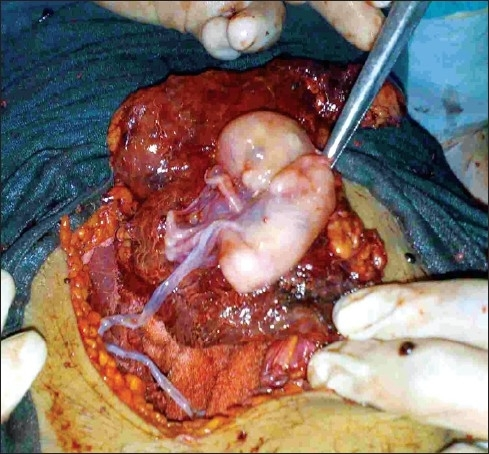
Abdominal Ectopic Pregnancy: A Comprehensive Overview
Introduction
An abdominal ectopic pregnancy (AEP) is a rare and life-threatening condition in which the fertilized egg implants outside the uterine cavity, specifically within the abdominal cavity. This aberrant implantation accounts for approximately 1% of all ectopic pregnancies, which themselves constitute 2% of all pregnancies. AEP poses significant risks to the mother’s health, including hemorrhage, infection, and organ damage.
Etiology
The exact cause of AEP is not fully understood, but several factors have been identified as potential contributors:
- Previous pelvic surgery: Scar tissue from prior surgeries, such as cesarean sections or hysterectomies, can obstruct the fallopian tubes, increasing the risk of ectopic implantation.
- Pelvic inflammatory disease (PID): Inflammation and scarring of the fallopian tubes due to PID can also impede the passage of the fertilized egg.
- Assisted reproductive technologies (ART): In vitro fertilization (IVF) and other ART procedures can increase the likelihood of ectopic implantation.
- Congenital uterine anomalies: Structural abnormalities of the uterus, such as a bicornuate or septate uterus, can create favorable conditions for abdominal implantation.
- Endometriosis: The presence of endometrial tissue outside the uterus can provide a site for ectopic implantation.
Clinical Presentation
AEP often presents with nonspecific symptoms, making early diagnosis challenging. Common signs and symptoms include:
- Abdominal pain: Typically severe and intermittent, often accompanied by nausea and vomiting.
- Vaginal bleeding: May be irregular or absent.
- Pelvic mass: Palpable on pelvic examination.
- Shoulder pain: Caused by irritation of the diaphragm by the growing ectopic pregnancy.
- Shock: In severe cases, as a result of hemorrhage or infection.
Diagnosis
The diagnosis of AEP is based on a combination of clinical findings, imaging studies, and laboratory tests:
- Transvaginal ultrasound: The primary imaging modality for diagnosing AEP, allowing visualization of the ectopic pregnancy and assessment of its location and size.
- Serum beta-human chorionic gonadotropin (β-hCG): Elevated levels of β-hCG, a hormone produced by the placenta, are indicative of pregnancy.
- Laparoscopy: A minimally invasive surgical procedure that involves inserting a camera into the abdominal cavity to directly visualize and confirm the ectopic pregnancy.
Management
The management of AEP depends on the patient’s clinical presentation, the size and location of the ectopic pregnancy, and the mother’s desire for future fertility. Treatment options include:
- Medical management: In some cases, AEP can be treated with methotrexate, a medication that stops the growth of the ectopic pregnancy. This option is only suitable for small, unruptured pregnancies.
- Surgical management: The most common treatment for AEP is laparoscopic surgery, which involves removing the ectopic pregnancy and any associated scar tissue. In some cases, open surgery may be necessary.
Complications
AEP can lead to several serious complications, including:
- Hemorrhage: Rupture of the ectopic pregnancy can cause life-threatening bleeding.
- Infection: The ectopic pregnancy can become infected, leading to sepsis.
- Organ damage: The growing ectopic pregnancy can compress or damage surrounding organs, such as the intestines or bladder.
- Infertility: Scarring from the ectopic pregnancy or its surgical removal can increase the risk of future infertility.
Prognosis
The prognosis for AEP depends on the severity of the condition and the timeliness of diagnosis and treatment. With prompt intervention, most women recover fully and maintain their fertility. However, delayed diagnosis or treatment can significantly increase the risk of complications and mortality.
Prevention
There is no surefire way to prevent AEP, but certain measures can reduce the risk:
- Avoiding pelvic infections: Practicing safe sex and seeking prompt treatment for pelvic inflammatory disease.
- Minimizing pelvic surgery: Only undergoing necessary pelvic surgeries and choosing experienced surgeons.
- Using contraception: Preventing unplanned pregnancies reduces the overall risk of ectopic pregnancy.
- Seeking early prenatal care: Regular prenatal visits allow for early detection and management of any potential complications.
Conclusion
Abdominal ectopic pregnancy is a rare but potentially life-threatening condition that requires prompt diagnosis and treatment. Understanding the risk factors, clinical presentation, and management options is crucial for healthcare providers to ensure optimal outcomes for affected women. By raising awareness and promoting preventive measures, we can reduce the incidence and severity of AEP and improve the health and well-being of women.